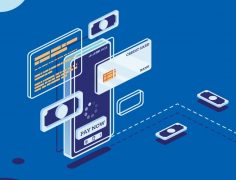The payments world has changed substantially over the past three years. Not only have mobile payments surged past the “novelty” stage into mainstream usage, but a global pandemic transformed the economic landscape, significantly impacting customers’ payments behaviour.

Serving your clients and customers respectfully and effectively is especially important in times of economic uncertainty
Billers and lenders are also still recovering from the pandemic, with many still struggling as a result of business shutdowns or worker shortages. But now is not the time to take a “set it and forget it” approach to billing and collections.
Macroeconomic forces at play have changed consumers’ willingness and ability to pay all of their bills, forcing them to prioritise the most important. However, billers and lenders have tools to respond – in collaboration with their payments platform provider – to reduce risk and encourage on-time and successful payments.
Here are four trends economists are watching with tips on how to respond:
Trend #1: Consumers are embracing new bill payment types to access funds wherever they’re available
In the past, billers have offered their customers payment options with the cheapest transaction costs and highest approval rates – such as ACH and debit – but today’s optimised payment mix must be much broader. That’s because consumers have liquidity in a variety of forms today (e.g., cash, credit lines, stored value, or crypto) which are accessible via numerous apps and devices (e.g., Apple/Google Pay, Venmo, or PayPal), and letting them tap into those sources when it’s time to pay a bill may increase their likelihood of paying fully and on time.
For instance, if a customer’s bank account is low one month, they could access their PayPal or Venmo balance right from their payment screen if the biller and payment partner offer those options. Or, if they have cash on hand, they can head to a retail location they already frequent, such as 7-Eleven, Walmart, or Family Dollar. The customer simply shows the retailer’s cashier a personalised cash barcode, pays the bill, and collects a receipt. The transaction then transmits digitally to the biller.
Certain payment types like Apple Pay and Google Pay have additional benefits, such as being readily accessible on one’s smartphone and easy to authenticate and verify the amount. They also reduce the likelihood of typing errors that can lead to declines because customers need only tap on their phones and their biometrics enable access to their payment screen.
One caution though: more payment options means it’s more important than ever to work with a payments platform provider that keeps all forms of payment data secure and protected. At a minimum, that means protecting personally identifiable information (PII), staying compliant with PCI-DSS requirements, and securing payments data to address cyber vulnerabilities.
Security also can be enhanced through new payments technologies that boost bill pay efficiency and, therefore, limit exposure. For example, pre-authenticated payment links in reminder emails and texts, or embedded in QR codes on paper billing statements, take customers directly into their verified payment flow, allowing them to effortlessly complete payments without typing in account numbers or passwords. This eliminates unnecessary logins, during which tracking software or malware can snag customer information.
Trend #2: Chargebacks are increasing as issuers and customers chase “easy money”
In times of economic stress, more card issuers are focused on reducing credit losses and collecting over-limit balances, and therefore are more flexible on customer chargebacks. Some of those are “friendly fraud” (honest mistakes), and others are caused by biller error. However, in many cases, customers exploit the chargeback process as a means to avoid responsibility for the payment obligation, knowing that many merchants forgo challenging the chargeback (re-presentment) except on high-value transactions because of the cost and experience required to successfully win a chargeback.
A defensive risk posture on chargebacks is critical to discourage attempts by issuers, issuer processors, and opportunistic customers to exploit the dispute process. That said, billers will need to follow two steps to effectively and efficiently pursue chargebacks.
First, they must put in place a process to capture the transaction chargeback data in a timely manner. This involves setting up a database to collect important information for every transaction, including consumer session and contact information, written communications with the consumer, past transaction data and historical payment trends, and all purchase or loan documents with terms and conditions.
The second step is to make the dispute process as time-efficient and successful as possible. The information you’ve collected in your database will be helpful in proving the initiator has conducted a fraudulent chargeback. Make sure your submission includes clear images and documents with the appropriate resolution for transmission, all evidence related to the case, proof of consumer payment authorisation, a copy of your terms of service and, if applicable, a copy of your refund policy.
Remember that time is critical here because processors’ re-presentment windows are narrow, often 30 days. Reach out to your payments platform provider to ask how they can help you prevent chargebacks and win disputes.
Trend #3: Inflation is driving customers to shift payment priorities
Non-sufficient funds (NSF) declines haven’t changed substantially during the recent rise in inflation, but what has shifted is the number of repeated NSFs some customers are generating each month, according to our aggregate customer data.
The problem appears to stem from a rise in the cost of living that outpaces wage growth. That triggers something known as “payment priority,” where consumers must choose what they will pay first. Not surprisingly, they end up prioritising housing, healthcare, education, and auto over unsecured loans or credit card bills. That may sound like a no-win situation for billers and lenders, but there are two effective and low-cost collection practices you can put in place to reduce delinquency and decline rates.
First, you must strengthen customer communication to make it as easy as possible for the customer to pay right in the moment. Those communications might involve a reminder text, email, or push notification that includes a personalised QR code or link that takes customers directly into their verified payment flow, where they can pay with any payment type they prefer. Or, it may involve a service call to the customer during which the agent lists many options to pay and offers to stay on the line to help the customer complete payment using the option they prefer.
A competent and comprehensive payments platform provider should be able to support those communications efforts, both by automating payment reminders that include personalised QR codes and links and by offering a wide range of payment options that help consumers find a way to pay.
The second strategy is to optimise the timing of your billing cycle. Our data shows that certain days of the week and month yield a 5-8% difference in approval rate, likely connected to when most people get paid. Therefore, we know it’s best to make bills due on the second through the fifth or on the 22nd of each month, and on a Monday, Friday, or Saturday. When you coordinate with your payments platform provider to time billing with days when consumers have money in their bank or wallet, you’re more likely to move higher in payment priority.
Trend #4: Consumers want quick disbursements for their unsecured loans with options for how they receive funds
Economists have noted some adjustments in disbursement demands as financially strapped consumers turn to unsecured loans to cover gaps in their budgets. Once again, mobile payments make loan disbursement faster and easier and let your customers choose exactly where they want the disbursement to land — debit card, ACH, PayPal, Venmo, or other accounts.
The key for lenders when it comes to security is to always use test transactions of small amounts to ensure the funds are disbursed to the right account before you send a large amount. Your payments platform provider can help you coordinate that validation step.
Managing payments during economic uncertainty
As these four trends demonstrate, having a modern and trustworthy payments platform provider in your court is invaluable. It ensures you have the knowledge and support necessary to optimise your payments mix, win chargeback disputes, move up in payment priority, and disburse quickly. It also minimises your risk of fraud and data breaches, which can financially devastate a business or at the very least sour its customer relationships.
Serving your clients and customers respectfully and effectively is especially important in times of economic uncertainty. As you understand how economic factors impact customers’ bill payment behaviour and take proactive steps to offer them practical solutions and options, you’re helping those customers be successful, and they will noticeAs you understand how economic factors impact customers’ bill payment behaviour and take proactive steps to offer them practical solutions and options, you’re helping those customers be successful, and appreciate your effort.
 About the author
About the author
Tim Murphy is the vice president and head of risk for PayNearMe.
Prior to joining PayNearMe, Tim worked with a number of global payment companies, including serving as PayPal’s chief compliance officer, eBay’s chief audit executive, Visa USA’s senior vice president of operations and Visa International’s senior vice president of risk management and treasury.
He also has been awarded patents as sole and joint inventor related to various payment systems innovations in the risk management discipline.
Credit: Source link


Comments are closed.